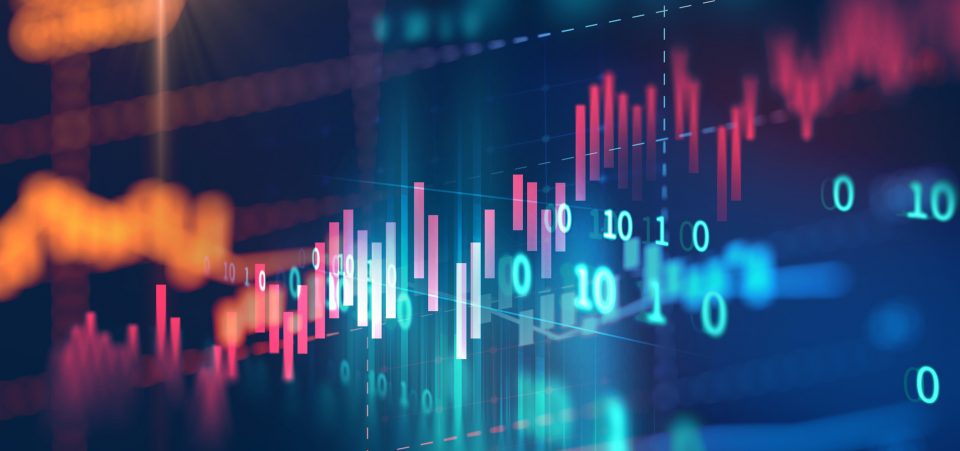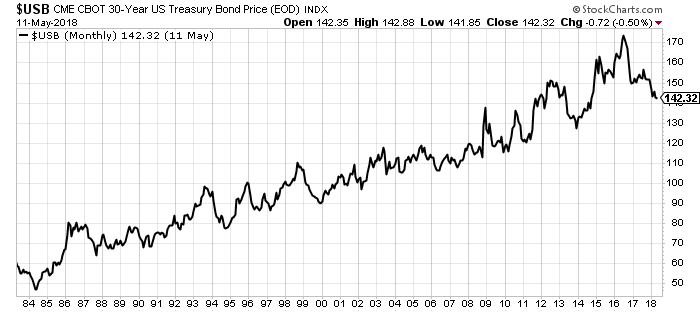Assets Across the Board Could Be in a Giant Bubble
If you are a value investor, you likely know that valuations across many assets are severely high. We could be in the midst of forming a giant bubble across the board. And when it pops, it may not be the prettiest sight.
Let’s begin with stocks. A bubble is forming, but no-one is talking about it.
Consider the cyclically adjusted price-to-earnings (CAPE) ratio of the stock market. It’s the price-to-earnings ratio adjusted for inflation and cyclicity. The CAPE ratio currently stands at 31.27; the last time it was this high, we were going through the dotcom bubble. (Source: “Online Data Robert Shiller,” Yale University, last accessed May 14, 2018.)
Looking from a historical perspective, the monthly average for the CAPE ratio since 1881 is around 16.86. That means this valuation measure is 85% above its historical average.
Here’s the thing; the CAPE ratio tends to fall to its historical average. If that happens, we would need a major stock market crash.
Bond Market Bubble Remains Inflated
The bond market is in a massive bubble as well.
Bonds have had 30-plus years of a bull run. Don’t just look at U.S. bonds; look at the sovereign bonds across the globe, too. Their yields have tumbled immensely, and prices have skyrocketed.
Look at the chart below, for example. It shows the price of 30-year U.S. bonds:
Chart courtesy of StockCharts.com
Corporate bonds are behaving a similar way. Even high-yield bonds (also referred to as junk bonds) are being valued like they are something great.
We are seeing a monetary policy regime change all over. Central banks are talking higher rates ahead—and higher rates could kill bonds.
Don’t forget that the bonds market is hands down much bigger than the stock market.
Art Market Witnesses Immense Returns
Lastly, look at the art market. As investors are yield-hungry, they could be creating a massive bubble in this market as well.
Price appreciation has been immense. A sculpture by Constantin Brancusi called “La Jeune fille sophistiquee (Portrait de Nancy Cunard),” purchased for $5,000 in 1955, is now estimated at above $70.0 million. That’s price appreciation of–and this is not a typo–1,399,900%. Over the 63-year period, the price for this sculpture increased by over 22,000% per year on average. (Source: “New York to Billionaire Art Investors: Whip Out Your Checkbooks,” Bloomberg, May 14, 2018.)
A painting named “Past Times” by Kerry James Marshall is estimated to sell for about $8.0 million to $12.0 million. In 1997, a municipal authority in Illinois, the Metropolitan Pier and Exposition Authority, bought this painting for $25,000. Assuming it sells for $12.0 million, this painting’s worth has increased by 47,900% over 21 years; that’s more than 2,200% each year on average.
What Happens Next?
Dear reader, bubbles can go on for a while, but not forever.
The bubbles in the stock market, bond market, and art market have been going on for a while. You have to wonder what happens when these bubbles pop.
Understand that when bubbles pop, we see panic. Investors run for the exit very quickly, the most recent examples being 2008 and 2009.
I am keeping a close eye on all of this. Let me make this very clear: this is not a recommendation to go short or anything of that sort, but just to show readers what’s happening. I can’t stress this enough; don’t get too complacent.
I will end with what I learned playing football in my early years: the bigger they are, the harder they fall.







